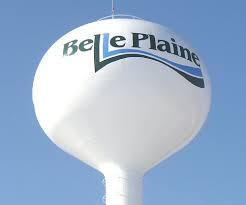Belle Plaine Water Reports and Guides

The high level of total dissolved solids (TDS) and organic matter also affect overall taste.
- Soft Water
- National Hardness Average
- Belle Plaine Hardness
Belle Plaine Water Softener Recommendations
The national average for water hardness is 5gpg (grains per gallon). Belle Plaine water hardness is 26-28gpg, which is almost 6x harder than average.
A water softener will protect your water heater, plumbing, and appliances from hard water damage. A high efficiency water softener will offer the same protection, but will use far less water and salt.
Need the Right Water Softener or Filter for Your Home in Belle Plaine, MN?
Contact us for a FREE water test and site inspection. We’ll get you a FREE quote to help you get the water quality you want.
Belle Plaine Water Reports
The City of Belle Plaine does regular water testing and publishes the results in Annual Drinking Water Reports. These reports explain which water contaminants, and what levels have been found.
The EPA has two standards for drinking water contaminants:
MCL: Maximum Contaminant Level
The legal limit for a certain contaminant
MCLG: Maximum Contaminant Level GOAL
The level with ZERO HEALTH RISKS, aka the “Health Limit”
All water contaminants meet the EPA’s “Legal Limit”. Contaminants that exceed the EPA’s Health Limit have been highlighted below.
Inorganic Contaminants
Inorganic contaminants include natural and manmade salts and metals. You are mostly exposed to inorganics through drinking water, most do not easily pass through skin. Carbon Filters (refrigerator and faucet filters) have almost ZERO impact on these contaminants. Reverse Osmosis very effective at removing inorganic contaminants.
| Contaminant | Amount Found | Health Limit | Legal Limit | Potential Effects |
|---|---|---|---|---|
| Arsenic | 1.65 | 0 | 10 | Skin damage or problems w/ circulatory systems, increased risk of cancer |
| Barium | 0.013 | 2 | 2 | Increase in blood pressure |
| Fluoride | 0.69-1.3 | 4 | 4 | Bone disease;children may get mottled teeth |
| Mercury | 0.07 | 1.2 | 2 | Kidney damage |
| Nitrate | 3 | 10 | 10 | Blue-baby syndrome |
Organic Contaminants
Organic contaminants can come from either natural sources like algae, or man-made chemicals. You can be exposed through drinking water, absorption through skin (bathing), and inhalation. This makes a Hybrid Filter System, or Whole House Carbon Filter a good preventative tool.
| Contaminant | Amount Found | Health Limit | Legal Limit | Potential Effects |
|---|---|---|---|---|
| Dalapon | 1.2 | 200 | 200 | Changes in kidney |
Disinfectants and Disinfection Byproducts
Disinfectants are added to kill bacteria. Disinfectants like Chlorine react with other chemicals and create “Disinfection Byproducts. These chemicals enter the body through inhalation, absorption through skin, and drinking water. A Whole House Carbon Filter is a good preventative tool in addition to a Drinking Water System for these compounds.
| Contaminant | Amount Found | Health Limit | Legal Limit | Potential Effects |
|---|---|---|---|---|
| Chlorine | 0.19 – 0.66 | 4 | 4 | Dry skin, eye/nose irritation, stomach discomfort |
